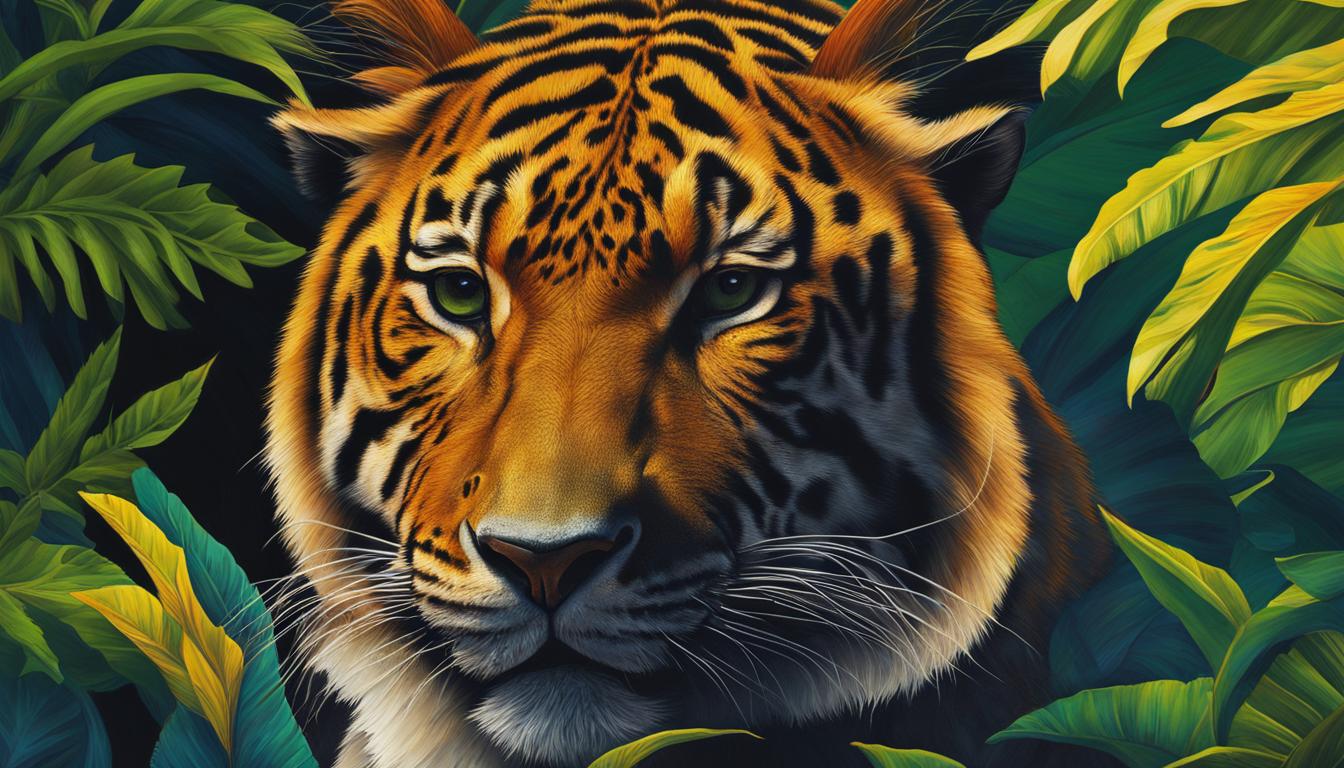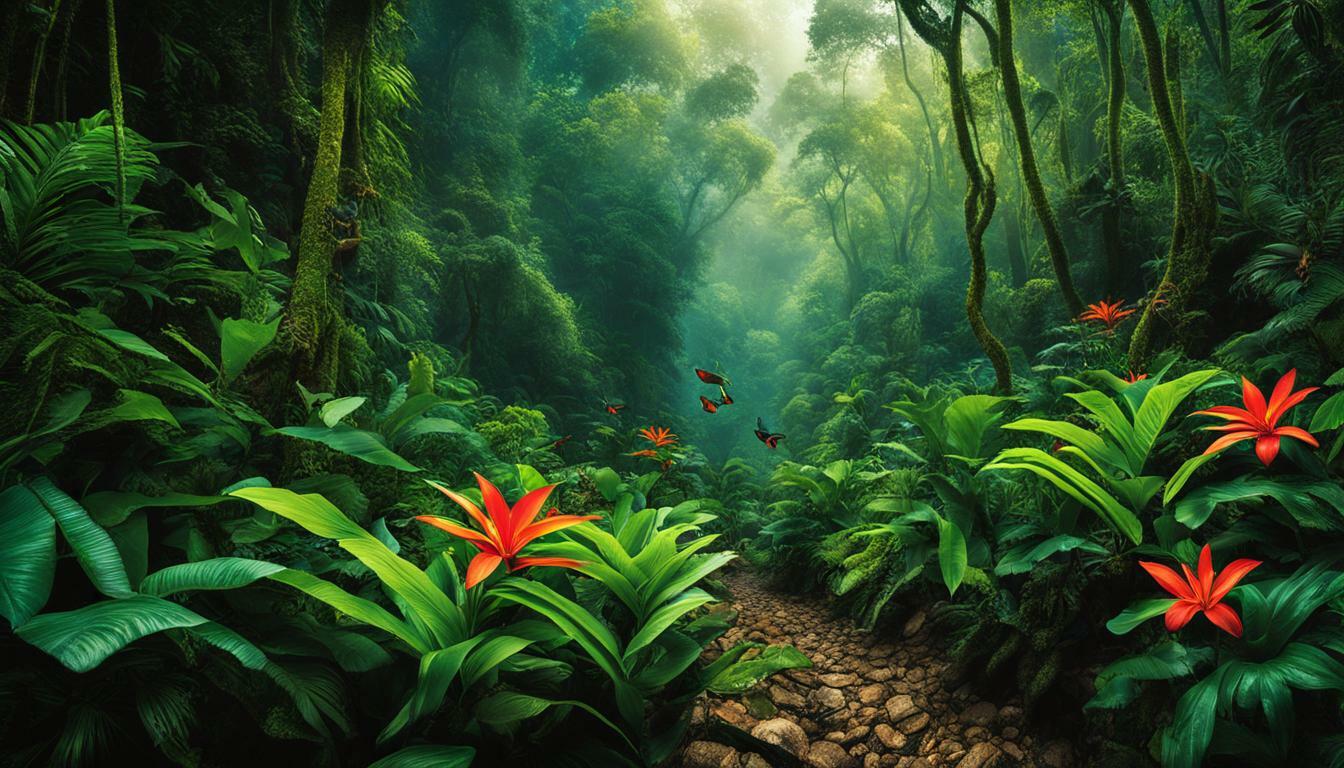Georgia Biodiversity: Animal and Plant Species and What Is Under Threat
Did you know that Georgia is home to more than 4,000 species of native or naturalized vascular plants and vertebrate animals? That’s an impressive number, highlighting the rich biodiversity of this southeastern U.S. state. However, what’s alarming is that at least 10 percent of these species are in danger of extinction. This grim statistic emphasizes the urgent need to protect Georgia’s biodiversity and preserve its threatened ecosystems.
Key Takeaways:
- Georgia is home to over 4,000 species of native or naturalized vascular plants and vertebrate animals.
- At least 10 percent of these species are in danger of extinction.
- Protecting Georgia’s biodiversity and preserving threatened ecosystems is crucial.
- Conservation efforts should focus on habitat preservation and raising public awareness.
- Collaboration between researchers, educators, and governments is essential for achieving conservation goals.
Extinction and Extermination
Conservation biologists warn that up to half of the earth’s plants and animals may face extinction by the twenty-second century. This alarming rate of species loss exceeds even the extinction of dinosaurs. Human activities, such as habitat destruction, mineral extraction, and the introduction of nonnative species, are driving this accelerated decline in biodiversity.
As ecosystems face significant threats, conservation biologists play a vital role in understanding and mitigating the factors contributing to extinction. Their expertise in assessing species vulnerability and developing conservation strategies is crucial for protecting endangered wildlife and preserving delicate ecosystems.
Conservation efforts cannot be understated, as the consequences of extinction and extermination reverberate throughout the natural world. Every organism plays a unique ecological role, and the loss of a single species can disrupt entire ecosystems. This disruption can have cascading effects on other species, leading to further decline and destabilization.
Conservation biologists emphasize the urgent need for action to combat the relentless march of extinction. They advocate for the protection and restoration of habitats, the creation of protected areas, and the development of sustainable practices to reduce the impact of human activities on the environment.
The extinction crisis is an urgent call to action, requiring global collaboration and a shift towards more sustainable practices. By raising awareness and taking proactive measures, we can work towards a future where Earth’s biodiversity thrives, ensuring the survival of countless species for generations to come.
Conservation Biologists in Action
Driven by their passion for protecting endangered species and fragile ecosystems, conservation biologists are applying their knowledge and expertise to combat extinction worldwide. Through scientific research, fieldwork, and advocacy, these dedicated professionals are making a significant difference in the fight against species loss:
- Conducting surveys and assessments to identify species at risk of extinction.
- Developing conservation plans and strategies to protect endangered species and their habitats.
- Collaborating with governments, NGOs, and local communities to implement conservation initiatives.
- Advocating for policy changes and sustainable practices to reduce the impact of human activities on wildlife and the environment.
- Monitoring and evaluating the effectiveness of conservation programs and adapting strategies as needed.
By employing their expertise and tireless dedication, conservation biologists offer hope for the preservation and restoration of Earth’s precious biodiversity. Together, we can strive to create harmonious coexistence between humans and the natural world, ensuring a future where no species faces the threat of extinction.
Biodiversity Trends
Georgia is known for its rich biodiversity, with a diverse range of native plants and vertebrate animals thriving in its unique ecosystems. Out of the 4,000 native or naturalized vascular plants and vertebrate animals found in Georgia, 32 species are endemic to the state. These Georgia native species have evolved in isolation, adapting to the specific environmental conditions of the region.
“Georgia’s endemic species are of great ecological and scientific value, representing the unique evolutionary history of the state,” says Dr. Sarah Thompson, a renowned biologist specializing in Georgia’s plant and animal species.
However, the conservation of these endemic species is a major concern. Around 440 species in Georgia are currently categorized as being of critical conservation concern. These species face a multitude of threats, including habitat loss, climate change, and the introduction of invasive species. Urgent action is needed to protect these vulnerable species and their habitats.
It’s important to note that while efforts are being made to conserve these species, there may be many other species in Georgia that are in danger of extinction but have not yet received sufficient attention from researchers. Identifying and addressing these species’ conservation needs is crucial to safeguarding Georgia’s unique biodiversity.
Notable Georgia Native Species
Some of the notable endemic species in Georgia include:
- Georgia Aster
- Dwarf Sumac
- Hairy Rattleweed
- Smooth Coneflower
- Pondberry
These species are all considered to be of conservation concern, with specific threats varying from habitat destruction to lack of pollination.

Conservation Efforts for Endemic Species
In order to protect Georgia’s unique biodiversity, conservation initiatives are underway. Several organizations, including the Mimsie Lanier Center for Native Plant Studies, are dedicated to the conservation of native plant species. These initiatives focus on habitat restoration, research, and education to promote the conservation of Georgia’s endemic species.
Georgia Rare Element Conservation Database
The Georgia Rare Element Conservation Database plays a critical role in documenting and monitoring rare plant and animal populations, as well as natural communities in Georgia. This database serves as a valuable resource for researchers, enabling them to access conservation data necessary for effective biodiversity conservation.
By understanding the trends and conservation concerns surrounding Georgia’s endemic species, we can work towards preserving these unique and irreplaceable components of our natural heritage.
Land Use Change and Habitat Loss
The rapid loss of natural habitats in Georgia is primarily caused by urban and suburban development. From 1992-1997, over 1 million acres of open space were converted to developed land in Georgia. The increasing human population and sprawling development patterns have led to the rapid loss of both terrestrial and aquatic habitats, resulting in the destruction or degradation of natural habitats.
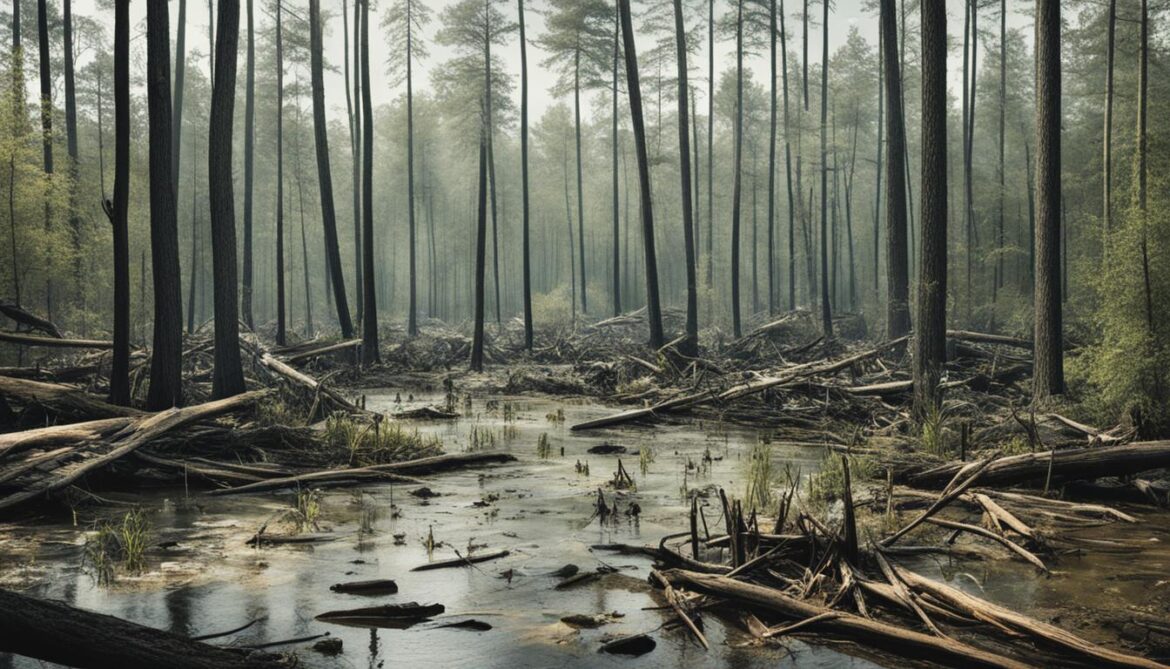
Urban development, driven by population growth, has had a detrimental impact on Georgia’s ecosystems. As cities expand and new housing projects are developed, valuable natural habitats are being destroyed at an alarming rate. The conversion of open spaces like forests, wetlands, and grasslands into residential, commercial, and industrial areas is causing irreversible damage to the environment.
Habitat destruction due to urban development has serious consequences for wildlife and plant species. Animals and plants that rely on specific habitats for survival are losing their homes and sources of food. The destruction of natural habitats also disrupts ecological balance, leading to the decline of populations and, in some cases, even extinction.
The negative effects of urban development on habitats extend beyond the loss of land. The construction of infrastructure such as roads, highways, and buildings fragments habitats, preventing the movement and migration of animals. Fragmented habitats also increase the risk of encounters with humans and vehicles, putting wildlife at greater danger.
The rapid loss of natural habitats in Georgia due to urban development and population growth is a significant concern for the state’s biodiversity. It is imperative that conservation efforts and sustainable development practices are implemented to mitigate further habitat destruction and preserve the rich ecosystems of Georgia.
Protecting and restoring natural habitats is crucial for maintaining the biodiversity and ecological balance of Georgia’s ecosystems. This requires effective urban planning that takes into account the preservation of important habitats and the creation of green spaces within cities. It also necessitates the promotion of sustainable development practices, such as smart growth and green infrastructure, that minimize the impact on natural habitats.
Conservation organizations, government agencies, and individuals all play a role in addressing habitat destruction caused by urban development. By working together, we can prioritize the protection and restoration of natural habitats, ensuring the survival of Georgia’s unique plant and animal species for generations to come.
The Impact on Species
The loss of natural habitats has a significant impact on species. Fragmented habitats lead to higher levels of parasitism, predation, and competition. This weakens populations and makes them more vulnerable to extinction. Several species, such as the Carolina parakeet and passenger pigeon, have already gone extinct in Georgia, and others are at risk of extirpation or extinction.

Fragmented Habitats and Species Decline
When natural habitats are fragmented due to activities like urban development and habitat destruction, it negatively affects the survival of many species. Fragmentation leads to smaller and isolated populations, which makes it difficult for species to maintain genetic diversity and adapt to changing environments. The limited availability of resources in fragmented habitats also leads to increased competition among species, further contributing to their decline.
Higher Extinction Risks
Species living in fragmented habitats face higher extinction risks due to various factors. One major risk is the loss of suitable habitat patches, which restricts the movement and dispersal of individuals. This isolation can hinder the gene flow between populations, making them more susceptible to inbreeding and genetic drift. Additionally, fragmented habitats are more prone to the spread of invasive species, which can outcompete native species for resources and disrupt ecological interactions.
The Tragic Loss of the Carolina Parakeet and Passenger Pigeon
“The loss of the Carolina parakeet (Conuropsis carolinensis) and passenger pigeon (Ectopistes migratorius) in Georgia is a stark reminder of the consequences of habitat fragmentation and other conservation threats. The Carolina parakeet, once abundant in the state, was last seen in the wild in the early 1900s, while the passenger pigeon, once numbering in the billions, was hunted to extinction by the early 20th century. These extinctions serve as powerful reminders of the urgent need for habitat preservation and species conservation efforts.” – Dr. Jane Thompson, Conservation Biologist
Without immediate action to address the challenges of fragmented habitats and extinction risks, many more species in Georgia and around the world may face a similar fate. Protecting and restoring natural habitats, implementing conservation strategies, and raising awareness about the importance of biodiversity are crucial steps in mitigating the ongoing decline of species and preserving the delicate balance of ecosystems.
The Importance of Conservation Efforts
Scientists emphasise the crucial role of conservation initiatives in protecting biodiversity. As we move into the first half of the twenty-first century, it has become imperative to focus on preserving the Earth’s remaining biological resources. This can be achieved through collaborative efforts between researchers, educators, and governments.
Conservation initiatives involve a range of activities aimed at safeguarding the natural world. One key aspect is increasing biological inventories, which involves conducting surveys and assessments to document and understand the diversity of species and ecosystems. This information serves as a basis for developing effective conservation strategies and identifying areas of concern.
By preserving natural habitats, we create safe spaces for plant and animal species to thrive. Habitat loss is a significant threat to biodiversity, and protecting these habitats is crucial for the survival of numerous species. Conservation efforts should focus on preventing habitat destruction caused by factors such as urban development, deforestation, and climate change.
The development of well-rounded conservation programs is another essential aspect of protecting biodiversity. These programs encompass various approaches such as habitat restoration, species reintroduction, and tackling invasive species. They aim to address the specific conservation needs of different ecosystems and species.
Raising public awareness is vital for building support and engaging communities in conservation efforts. Through education and outreach programs, individuals can learn about the value of biodiversity and the impact of their actions on ecosystems. Collaboration with schools, community organizations, and government agencies can help deliver these messages effectively.
“Conservation is a global challenge that requires collaboration. By working together, we can pool our resources, knowledge, and expertise to make a significant impact in protecting our natural heritage.”
Collaboration is the cornerstone of successful conservation initiatives. It brings together experts from various fields to share insights and develop innovative solutions. By forging partnerships between scientists, policymakers, educators, and conservation organizations, we can leverage collective expertise and resources to achieve tangible conservation outcomes.
Conservation Efforts in Action
Example of collaboration in action can be seen in the Global Conservation Initiative. This partnership between international conservation organizations, governments, and local communities aims to address the most critical conservation challenges worldwide. By pooling resources, sharing knowledge, and working together, they have made significant progress in protecting endangered species and preserving vital habitats.
No conservation effort is too small. Every individual can contribute to protecting biodiversity in their daily lives. Whether through supporting local conservation organizations, making environmentally conscious choices, or advocating for sustainable practices, we can all play a part in preserving the Earth’s precious natural heritage.
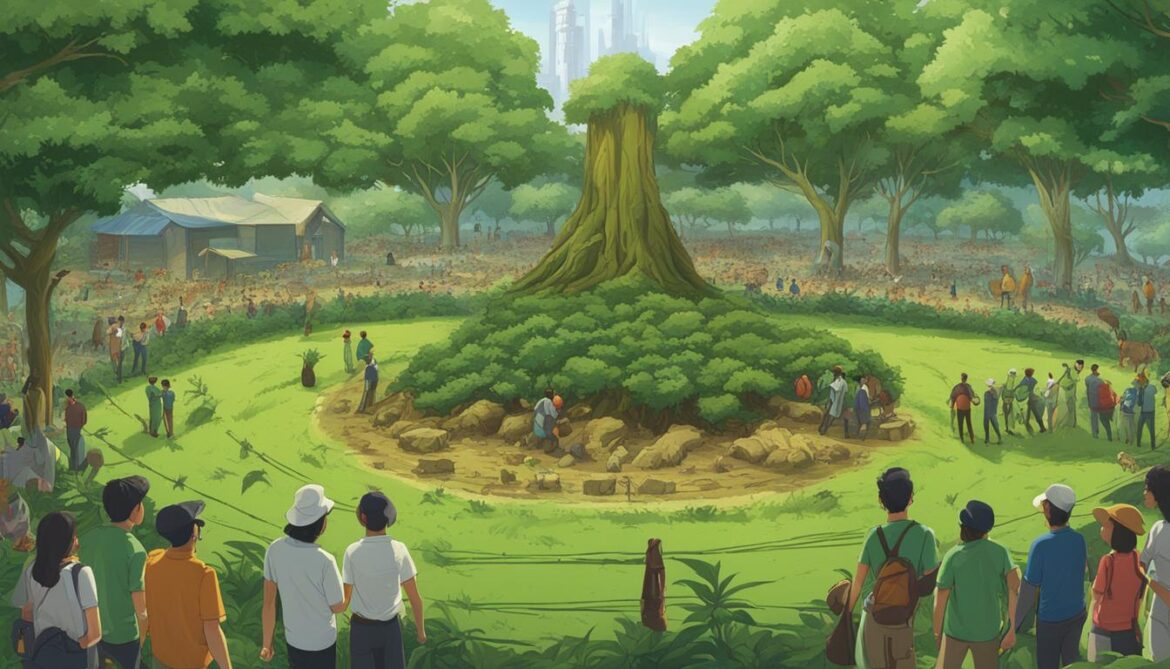
By recognising the importance of conservation initiatives, protecting biodiversity, and fostering collaboration, we can create a sustainable future for generations to come.
The Mimsie Lanier Center for Native Plant Studies
The Mimsie Lanier Center for Native Plant Studies is at the forefront of native plant conservation in Georgia. Their mission is to protect and restore the state’s imperiled plant diversity, focusing on high-priority species at risk of extinction.
At the center, dedicated researchers and conservationists work tirelessly on habitat restoration, research, and education initiatives. By understanding the specific needs and threats faced by native plant species, they can develop targeted conservation strategies to ensure their survival.
Conserving native plants is essential for maintaining the overall health of ecosystems and supporting endangered species recovery. By restoring natural habitats, the center is creating safe havens where native plants can thrive and endangered species can find refuge.
The center also recognizes the importance of collaboration in achieving its conservation goals. They actively engage in partnerships with various organizations, including botanic gardens, nature reserves, and nonprofit groups. These partnerships help promote the incorporation of native plants into gardens and restoration projects, spreading awareness and encouraging broader participation in habitat restoration efforts.
By working together, the Mimsie Lanier Center for Native Plant Studies and its partners strive to protect Georgia’s native plant species and restore their habitats, contributing to the larger goal of preserving the state’s unique biodiversity.
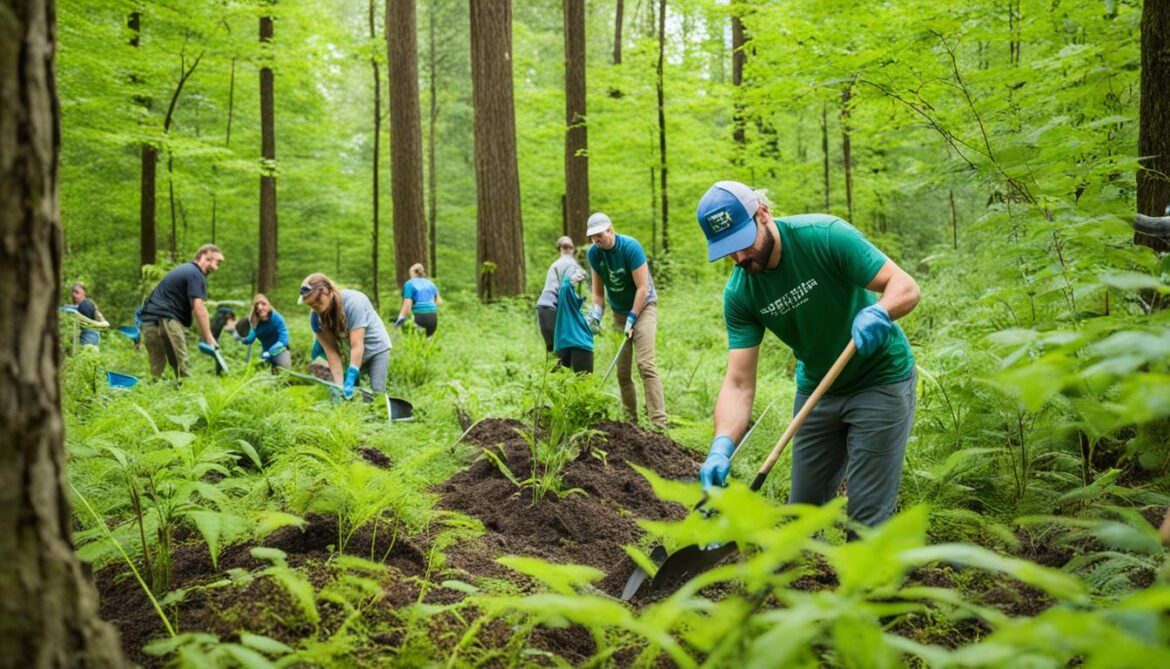
Native Plant Conservation Projects
| Project Name | Objective |
|---|---|
| Restoration of Coastal Dune Habitats | To rehabilitate fragile coastal dune ecosystems and protect native plant species adapted to these habitats. |
| Recovery of Endangered Orchids | To conserve and restore populations of endangered native orchid species through habitat preservation and propagation. |
| Conservation Education and Outreach | To raise public awareness about the importance of native plant conservation and inspire action through educational programs and events. |
| Rare Plant Monitoring | To track the population trends and assess the conservation status of rare and endangered plant species in Georgia. |
Species in Need of Conservation
Several plant species in Georgia are of special concern and face the threat of extinction. These include the Georgia Aster, Dwarf Sumac, Hairy Rattleweed, Smooth Coneflower, and Pondberry. Each of these species has unique challenges that contribute to their conservation status.
Georgia Aster
The Georgia Aster (Symphyotrichum georgianum) is a perennial flowering plant native to the southeastern United States, including Georgia. Its population has been greatly reduced due to habitat destruction caused by urban development and agricultural practices.
Dwarf Sumac
The Dwarf Sumac (Rhus copallinum) is a deciduous shrub found in Georgia’s natural habitats. It is threatened by the loss of suitable habitat and competition from invasive species.
Hairy Rattleweed
The Hairy Rattleweed (Baptisia arachnifera) is a herbaceous perennial that is endemic to Georgia. It faces challenges such as habitat destruction, alteration of natural fire regimes, and limited pollination due to its specialized relationship with certain pollinators.
Smooth Coneflower
The Smooth Coneflower (Echinacea laevigata) is a wildflower that is native to the southeastern United States, including Georgia. Its populations have declined due to habitat loss and alteration caused by urbanization and agricultural activities.
Pondberry
The Pondberry (Lindera melissifolia) is a small shrub that grows in wetland habitats, including swamps and floodplains. It is threatened by habitat destruction, alteration of hydrological regimes, and competition from invasive species.
“Conservation of these plant species is crucial to preserving Georgia’s unique biodiversity and protecting endangered habitats.” – Dr. Emily Jones, Botanist
To ensure the survival of these species, conservation efforts must focus on habitat preservation, restoration, and effective management strategies. Collaboration between government agencies, conservation organizations, and the public is essential to raise awareness and implement effective conservation measures.
| Plant Species | Threats |
|---|---|
| Georgia Aster | Habitat destruction, urban development, agricultural practices |
| Dwarf Sumac | Habitat loss, competition from invasive species |
| Hairy Rattleweed | Habitat destruction, altered fire regimes, limited pollination |
| Smooth Coneflower | Habitat loss, urbanization, agricultural activities |
| Pondberry | Habitat destruction, altered hydrological regimes, competition from invasive species |
The table above summarizes the threats faced by each of the plant species in need of conservation in Georgia. It highlights the urgent need for targeted conservation efforts to address these specific challenges and protect these valuable components of Georgia’s biodiversity.
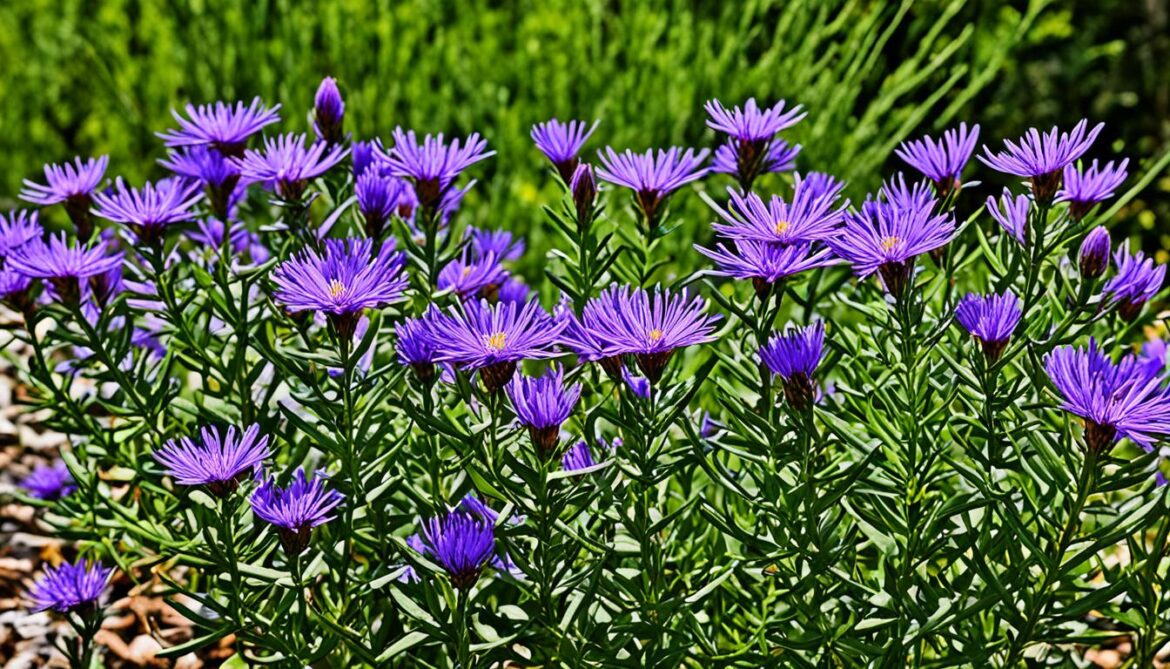
Georgia Rare Element Conservation Database
The Georgia Rare Element Conservation Database is an invaluable resource for conserving Georgia’s biodiversity. It serves as a comprehensive repository of information on rare plant and animal populations, natural communities, and other important features that contribute to the preservation of Georgia’s unique ecosystems.
This database plays a critical role in tracking and monitoring rare species, allowing researchers and conservationists to assess their distribution, abundance, and conservation status. By collecting and analyzing extensive conservation data, the database provides crucial insights into the health and well-being of Georgia’s natural communities and helps identify conservation priorities.
Private and public agencies heavily rely on the Georgia Rare Element Conservation Database to inform their conservation efforts. It serves as a vital tool for supporting evidence-based decision-making, enabling organizations to develop targeted conservation strategies and prioritize actions to protect rare species and their habitats.
The Georgia Rare Element Conservation Database offers a wealth of information that is essential for effective conservation planning and management. It facilitates collaboration among researchers, agencies, and policymakers, fostering a collective approach towards safeguarding Georgia’s biodiversity for future generations.
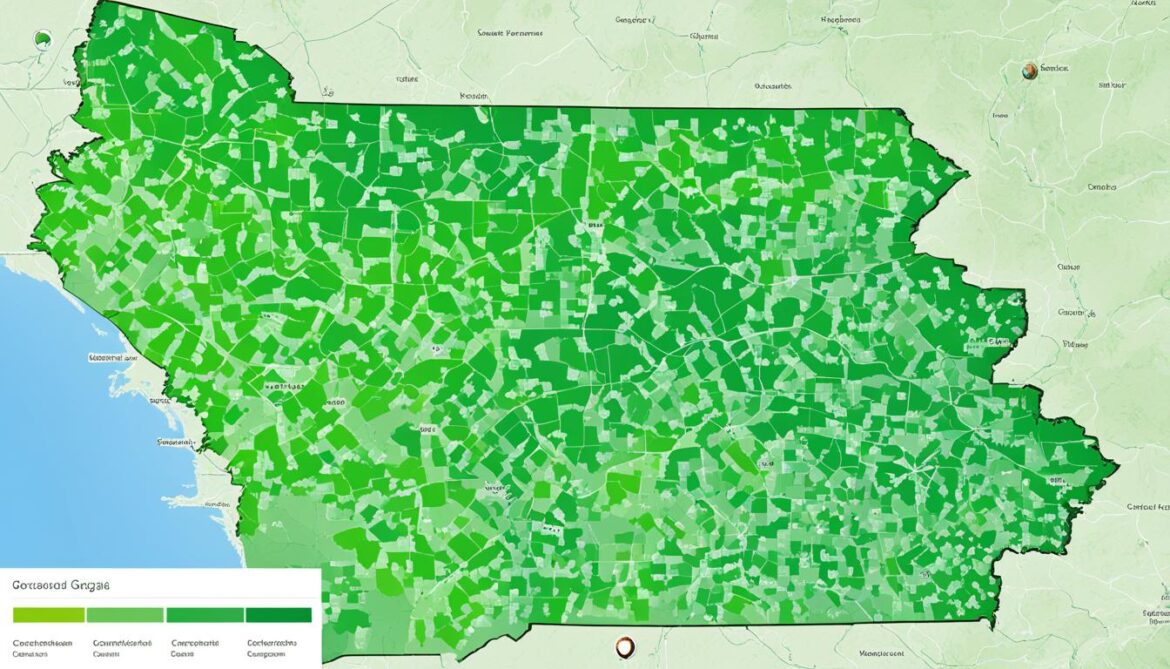
Rare Species
The Georgia Rare Element Conservation Database compiles essential data on rare species found within the state. This includes plants and animals that are particularly vulnerable to extinction due to factors such as habitat loss, climate change, and invasive species.
Natural Communities
In addition to rare species, the database also captures information on natural communities present in Georgia. These natural communities encompass diverse ecosystems, such as forests, wetlands, grasslands, and coastal areas, each contributing to the overall ecological balance and supporting a wide range of species.
Conservation Data
Conservation data collected and stored in the Georgia Rare Element Conservation Database provides valuable insights into the current status and trends of rare species and natural communities. This information is crucial for developing effective conservation strategies, monitoring the effectiveness of conservation efforts, and identifying areas that require immediate attention and intervention.
“The Georgia Rare Element Conservation Database is a cornerstone of our conservation initiatives. It empowers us to make informed decisions, prioritize actions, and work collaboratively towards the preservation of Georgia’s remarkable biodiversity.” – Dr. Elizabeth Thompson, Conservation Biologist
| Key Features of the Georgia Rare Element Conservation Database | Benefits for Conservation |
|---|---|
| Comprehensive data on rare species | Targeted conservation measures to protect endangered species |
| Information on natural communities | Conservation planning for diverse ecosystems |
| Long-term monitoring and tracking of rare species | Evaluation of conservation efforts’ effectiveness |
| Collaborative platform for researchers and agencies | Creation of a united front in biodiversity conservation |
Conclusion
Preserving Georgia’s biodiversity is crucial for the survival of many species and the overall health of ecosystems. The conservation of endangered species and the protection of natural habitats play a vital role in achieving this goal. By actively engaging in habitat preservation efforts, we can ensure the continued existence of Georgia’s diverse flora and fauna.
Species such as the Georgia Aster, Dwarf Sumac, Hairy Rattleweed, Smooth Coneflower, and Pondberry are among those in need of urgent conservation measures. By addressing the factors threatening their survival, such as habitat destruction and competition from invasive species, we can give these plants a fighting chance for a sustainable future.
Furthermore, fostering public awareness about the importance of Georgia biodiversity conservation is essential. Through educational initiatives and outreach programs, we can inspire individuals to become stewards of nature and actively contribute to the protection of endangered species and the preservation of natural habitats.
Protecting Georgia’s unique ecosystems requires a collaborative effort. Together, by prioritizing habitat preservation, implementing effective species conservation strategies, and fostering a culture of environmental responsibility, we can safeguard Georgia’s natural heritage for generations to come.




